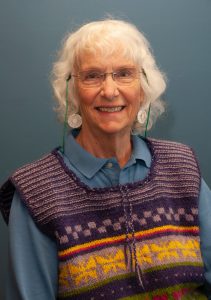 Make your year-end gift today!
Make your year-end gift today!
It’s a long way, geographically and mentally, from Friday Harbor to Rome. Rome is also notably lacking an ocean, and yet today’s Tide Bite is about a program that takes UW Marine Biology majors (and others) to Rome for a quarter to study “Ecology of the Mediterranean Sea”! There are nice cross-connections of both faculty and students between FHL and this study abroad program. Students who spend time in both programs get immersed in the differences among ocean basins – and water temperatures – and in the remarkable differences in deep history of the regions: Roman culture contrasting with Coast Salish culture. What an amazing opportunity for UW undergraduates!
From FHL to Italy: Teaching Ecology and Oceanography at the UW Rome Center
by Drs. Ken Sebens and Jim Murray
There was real excitement when the first students started to see bubbles coming out of the rock in shallow water, and even more as the strings of bubbles turned into curtains. Snorkeling along the edge of an ancient castle on a tall rock island was exciting enough, but finding these vents where volcanic activity causes carbon dioxide to bubble out of the earth was even better, especially since the students had just read a paper describing the effect of these vents on surrounding marine life. The water around the vents is naturally acidified, and thus provides a window into the effects of ocean acidification, a change that marine communities are experiencing world-wide. These active vents are directly tied to seismic activity that includes Mt. Vesuvius, visible in the distance, responsible for the burial of Pompeii and nearby towns in 79 CE. This was the fourth location along the coast of Italy where students in our quarter-long program had a chance to observe marine life in their natural habitats, on the Island of Ischia, a short ferry ride from Naples.
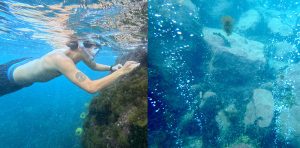
Fig. 1: Exploring marine benthic communities around the carbon dioxide vents on the island of Ischia, a site of natural acidification. Students had a chance to explore seagrass beds and rocky habitats near the vents and away from the acidified sites.
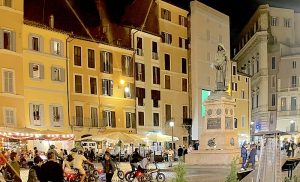
In 2013 Ken had a four-month sabbatical in Italy, working at the Università Degli Studi di Palermo in Sicily. During that visit, he also had a chance to visit the UW Rome Center, a site for UW study abroad programs since 1985. The UWRC occupies three floors of Palazzo Pio, a building over 500 years old built over a temple of Venus constructed in 55 BCE. After seeing their excellent teaching and lodging facilities, it was only natural to imagine teaching courses there in the future, but it was not until the end of the COVID shutdown that he visited again and was encouraged to design a program. This resulted in a 2022 program “Ecology of the Mediterranean Sea” which took 15 UW students from a variety of majors to Rome and other parts of Italy. Students took a full load of credits, with courses in ecology, science writing, and introductory Italian language. Instructors included Ken Sebens and two Italian professors teaching for the UW Rome Center, Valentina Miniati and Valentina Mariani.
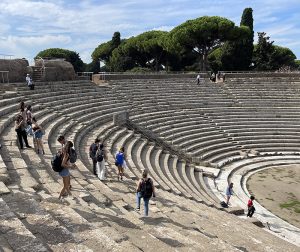
This was the first biology or environmental science program offered at the UWRC, where most courses deal with topics in the arts, humanities and engineering. But wait a minute, Rome is not even on the coast so why do a marine science program there? Mostly because it is an excellent place to teach and for the students to live for a whole quarter, and an easy place from which to visit coastal sites both north and south. Our first field trip was to Ostia, the ancient port of Rome, to see the marine life on the beaches and rock jetties and also to explore the ancient ruins of Ostia Antica and learn that the coast of the Mediterranean has changed a lot in two thousand years. If you think modern rivers are a problem, just imagine what the Tiber River was dumping into coastal habitats back then – basically all the waste products of Rome and its environs. Now Ostia is beautiful, and only a 30-minute metro ride from the train station in Rome. Other field trips went to Gaeta, Fogliano, Naples, Ischia and Livorno. In addition to getting in the water, students also visited public aquaria, museums, botanical gardens and research labs.
We offered the program again this Autumn, with Jim Murray (Professor Emeritus, UW Oceanography and FHL) teaching an oceanography course, along with two other courses in ecology (Ken) and Italian language (Valentina Mariani, UWRC). The oceanography course was the same introductory course that Jim taught previously at FHL and is now taught regularly on the Seattle campus. Jim’s interest in the Mediterranean region has mostly been focused on the Black Sea, the world’s largest anoxic basin, where he led research cruises during 1988-2005.
Both the ecology and oceanography courses in our program satisfy requirements for the Marine Biology major at UW, and most of the students this year were from that major. In fact, six of them had also taken courses at FHL, and for them the comparison of creatures and habitats may be especially enlightening! The 2022 field trips were repeated, with the addition of a trip to the Venice Lagoon, a boat trip along the coast at Sperlonga with snorkeling at two sites, and a look at the coastal caves where Emperor Tiberius had his villa and fish ponds, a type of early Roman aquaculture mainly aimed at providing food for elaborate imperial banquets. Another field trip included a tour of the Stazione Anton Dohrn, a marine research center and public aquarium in Naples, and one of the very first marine laboratories anywhere in the world. We were hosted by Professor Ferdinando Boero, who has also visited FHL and is well known to several of our FHL researchers. The trip to Ischia and visit to the acidic vents followed the Naples visit, and we spent two days exploring coastal habitats and learning about the early Greek colony there and Mediterranean plant life at the botanical garden.
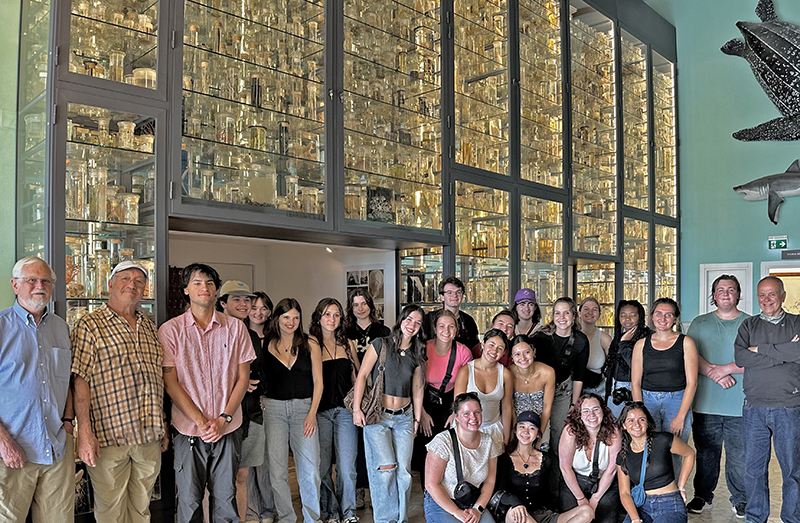
In Livorno, we were joined by fish biologist Paolo Domenici, based in nearby Pisa, who met us at the aquarium and gave us new insights into fish behavior, locomotion, and ecology in the Mediterranean region. Paolo is well known at FHL because he teaches a summer course on fish locomotion every other year. Next, we toured the southern part of the Venice lagoon, a site of mussel and crab aquaculture and extensive Adriatic fisheries, including a visit to the marine laboratory and museum in Chioggia run by the University of Padova. At the end of our rather long train and bus journey, the field trip ended in Venice where students had a chance to visit the islands there and some nearby locations on their own before returning to Rome. Everyone had a chance to experience the varied Italian cuisine on the field trips and of course in Rome – just another way to get to know many new marine species!
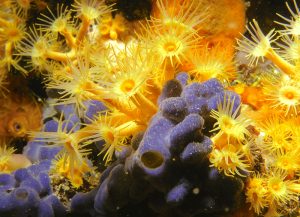
Italy is quite warm in October and early November but the crowds have left the beaches, so it is a great time for the UW program to be there. The location in Rome is also excellent for students who want to travel on their own to other destinations in Italy or other countries nearby. We can imagine this program continuing, and likely including other UW professors who have expertise in this region. Several of the programs at the UW Rome Center are taught every year, as this one could be if there were enough UW faculty available. For now, it is not being offered for 2025 but could happen again in 2026. So, we hope to see some of you in Italy in the near future. Ciao!
Make your year-end gift to help support FHL here
Tide Bites is a monthly email with the latest news and stories about Friday Harbor Labs. Want more? Subscribe to Tide Bites or browse the archives.